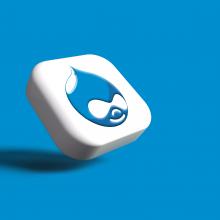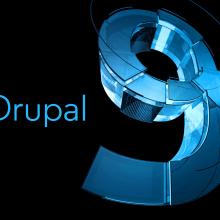Security
index, follow




index, follow
eDot.pro offers fast, secure and easily customizable web applications without the monopoly of our clients. All of that can’t be realized without Drupal CMS. If we use proprietary CMS, security and speed could be satisfied. But in that case, our clients will always dependent on the company who owns CMS. If we use Open-Source CMS like WordPress or Joomla, they are vulnerable, because most web infections refer to those two platforms. When we add it all up, Drupal CMS is the best solution.
Drupal is Open-Source CMS software. It is the most secure Open-source CMS. Drupal is also CMF, capable of being retooled to specific needs and functional requirements, like work only in the backend for communication. It is GPL licensed, which means it is free to download, modifying, reusing and distributing. It is programmed with the OOP system in the PHP programming language. eDot.pro is made in Drupal. This CMS is the most invulnerable Open Source according to global statistics. But it is hard to set up, experienced Drupal developers or agencies must be hired for modification, and it requires powerful servers for hosting. Drupal, WordPress and Joomla are three most popular Open-Source CMS.
We will not say Drupal is the best and other CMSs are not good. No, every CMS with years of tradition is good. But good for what?
When somebody is buying a car, he must know the purpose of the car and then choose it. Does he need a big family car, off-road car, limousine or sports car? Also, can he afford a good, expensive car or some low-cost variant. All of that, are factors for choosing a car that meets the needs.
Following that example, when somebody chooses a web application, he must know his requirements. And if our client has large-scale requirements, he chooses Drupal and then eDot.pro team enters the scene.
So why eDot.pro uses only Drupal instead of other CMSs:

From Drupal 8 all modules including core and contribute OOP give two large security factors:
It is generally known that irregular and uncommon updating is a common security problem and causes most security breaches. So, if application is made in OOP like Drupal 8 all contributed modules are very easy to upgrade to Drupal 9 after upgrading a core. Developer just need to replace deprecated code to newer. This way shorts time for updates, then waiting to upgrade modules to new Drupal core in procedural programming. So, the vulnerable period is shorter.
A CMS society or community is a huge group of people who work or are interested in different parts of one CMS. Drupal CMS community counts more than one million users. Real benefit of community is support about core, some module, modification or bug.
System of extending Drupal is completely free. So, every module on its main website Drupal.org is free. That gives opportunity for much more user-testing than paid extensions. WordPress and Joomla! also have centralizes community, but most extensions are paid. That reduces possibility of testing and resolving issues.
Also, a large team constantly analyzes security breaches in core and contributed modules in our CMS.
In early 2019. ec.europa.eu official European Commission’s website, started EU-FOSSA 2 project bug bounty software. There, the EU pays for finding bugs and security breaches in Open-source software, like Drupal is. €111k was spent in the first 18 months.
Drupal's community is forced to constantly improve security by presence of the big players like:
Perhaps, with other Open-source CMSs most of the client’s requirements can be satisfied except security. But with Drupal, developers and clients have much less “headache” and developers have more honest relationships with customers.
Drupal CMS is integrated with Symfony components, which is a secure, robust framework. It is not just about secured Symfony but integrating it in our CMS, more developers become involved in making security patches. Because, they are motivated to improve security for two web applications.
It gives more secure approach than pure HTML, because it's processing sanitized all HTML tags, which prevents XSRF attacks. Also, PHP is not executed in a Twig file, instead it will be displayed as plain text.
Other CMSs by default have just one content type and two types of taxonomy, usually category and tags. On contrary to Drupal CMS, without extensions, developers can make many content types. All of them are also integrated with variable types of taxonomy. For example, on one website it can be Basic pages, Blog articles, Videos, Image gallery, … all with separated Categories and Classifications and crossover tags. Those content types can have multiple field types like dates, phone, year and not just body and title like other CMSs.
Great set of modules for displaying content in various ways. Views is a core module and can display contents for backend and frontend. It means that our CMS can out of box display content in various ways on different devices.
Drupal is an Open-source CMS, so everyone can continue working on the same project.
Construction of our Drupal CMS is developed to work lighting-fast and serve millions of visitors per day. And all of that, neither one visitor is neglected by speed. In short, it powers extreme traffic with the same performance.
Automated translation gives opportunity to reach much more audience. Also, thanks to core modules, every part of the site can be easily translated to every language.